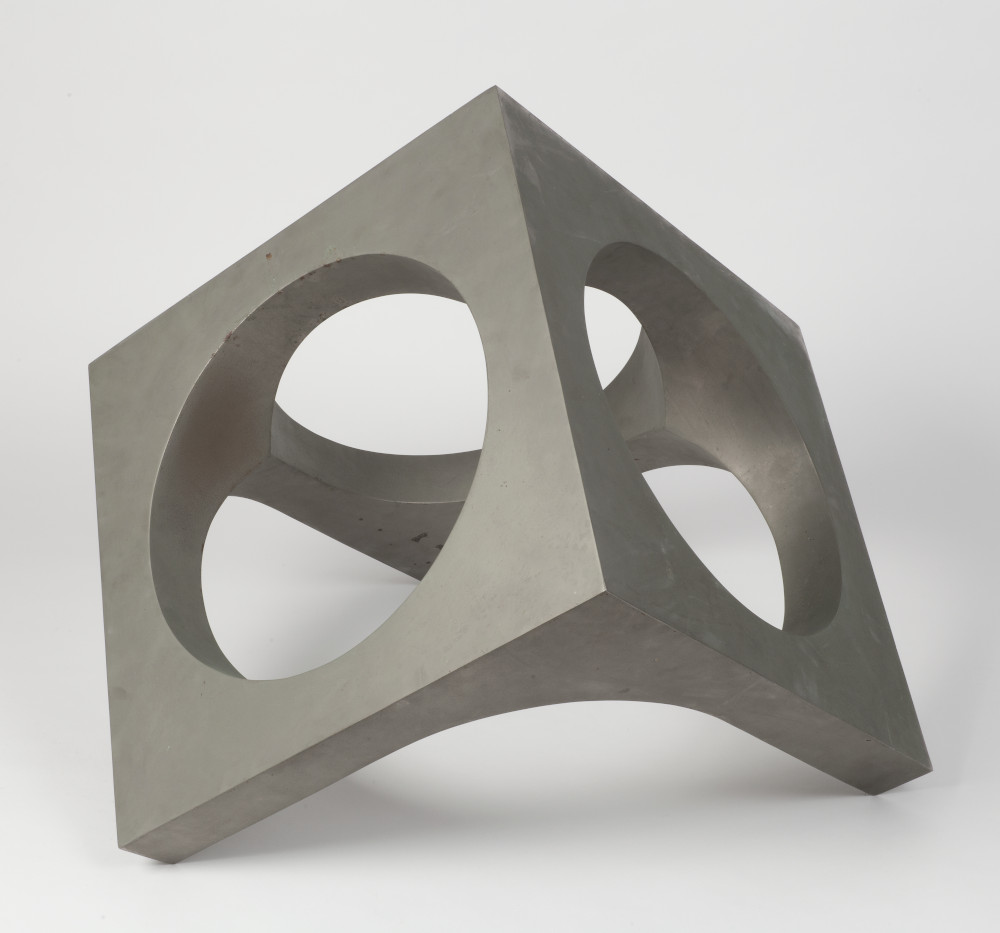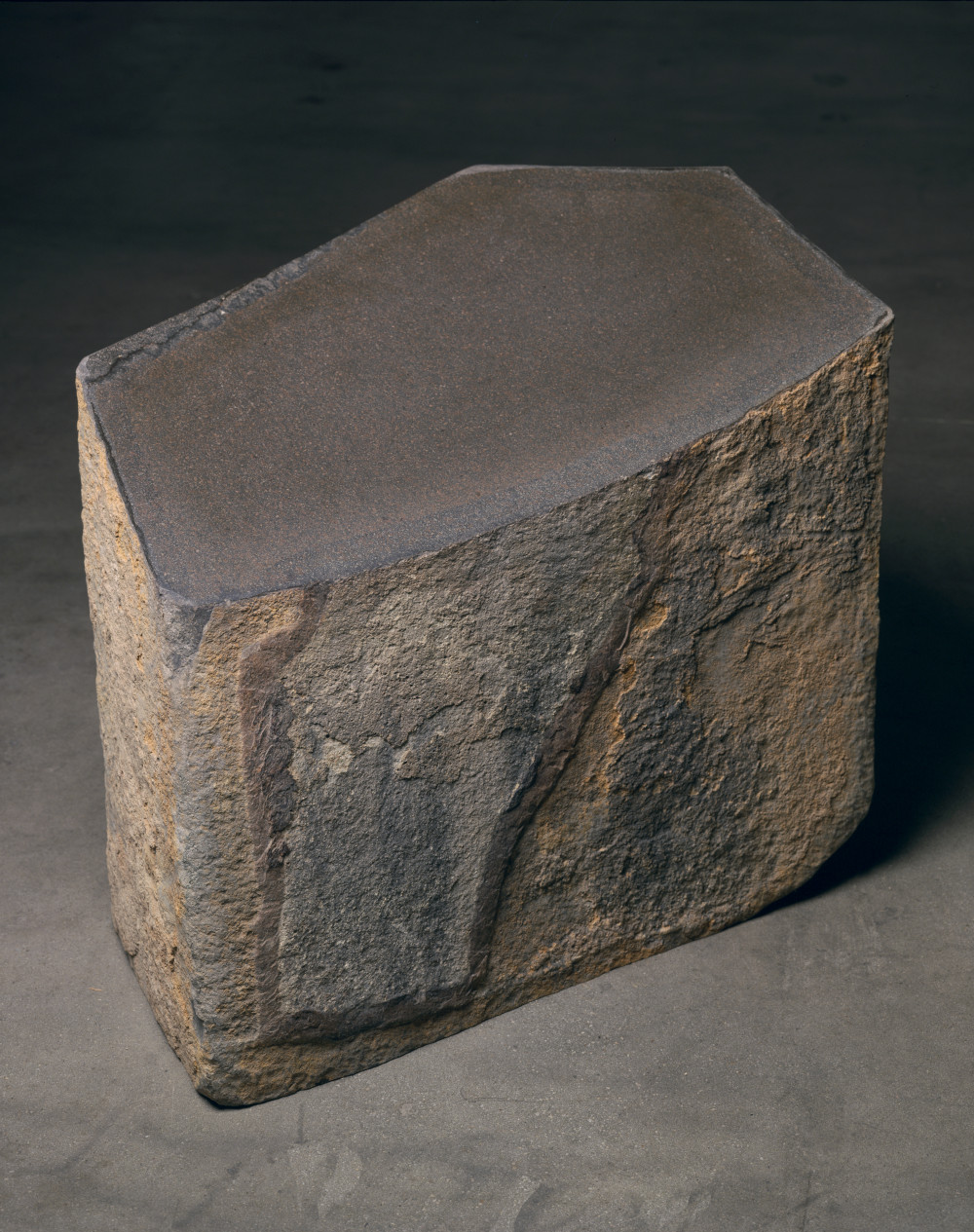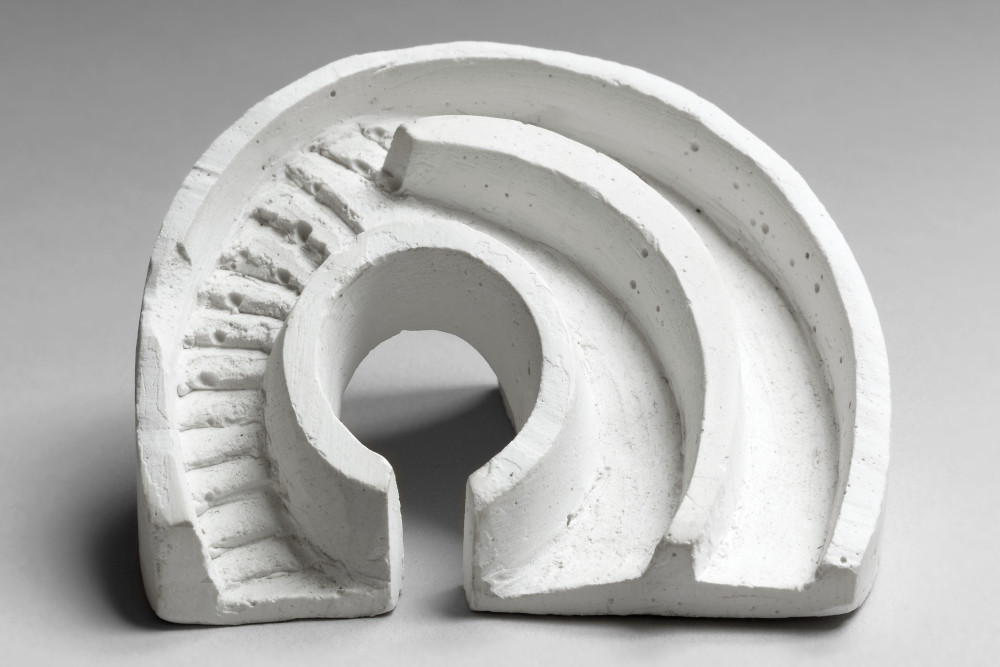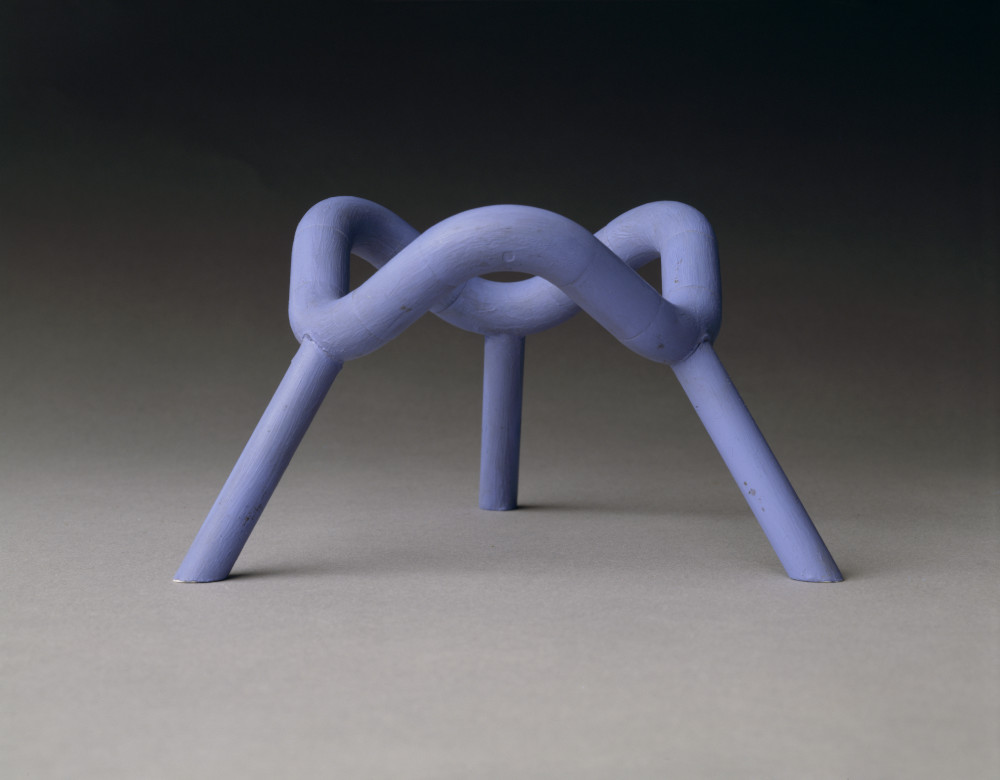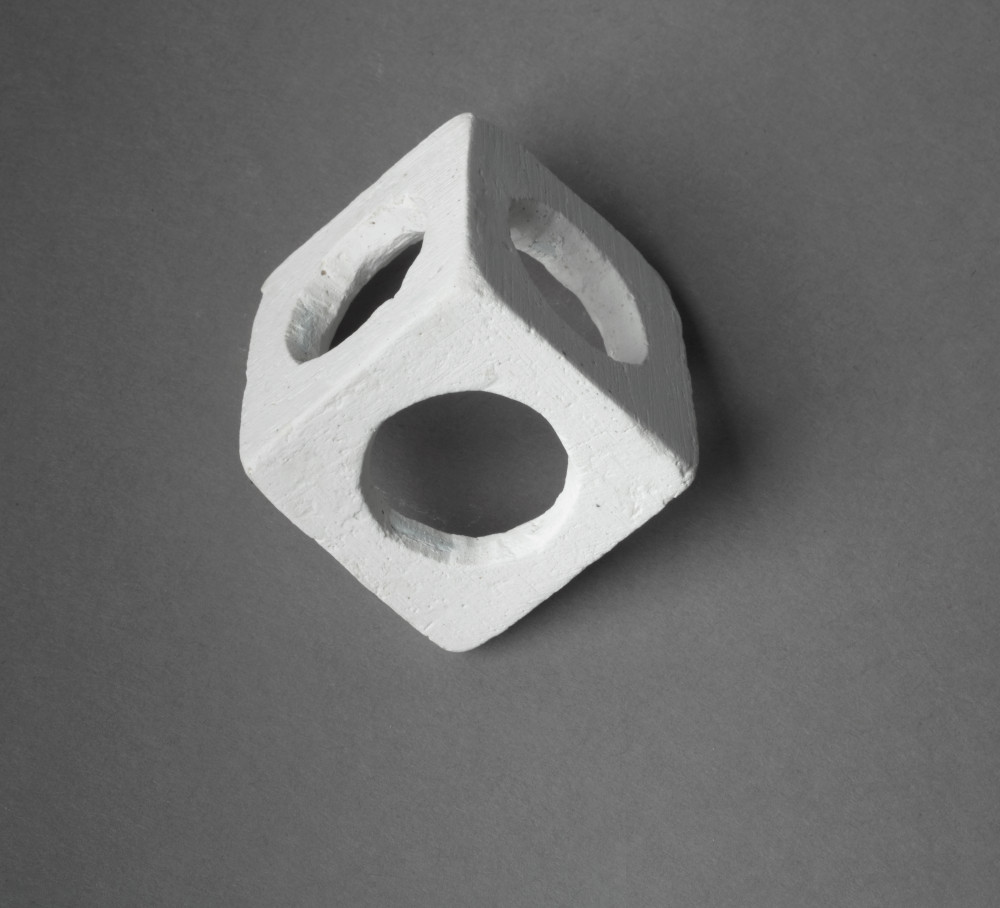Stone Age and Space Age
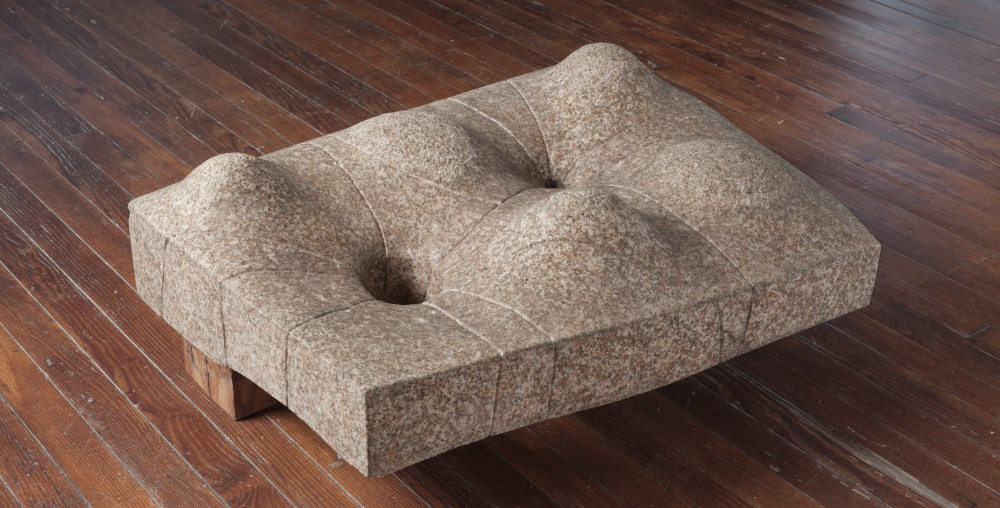
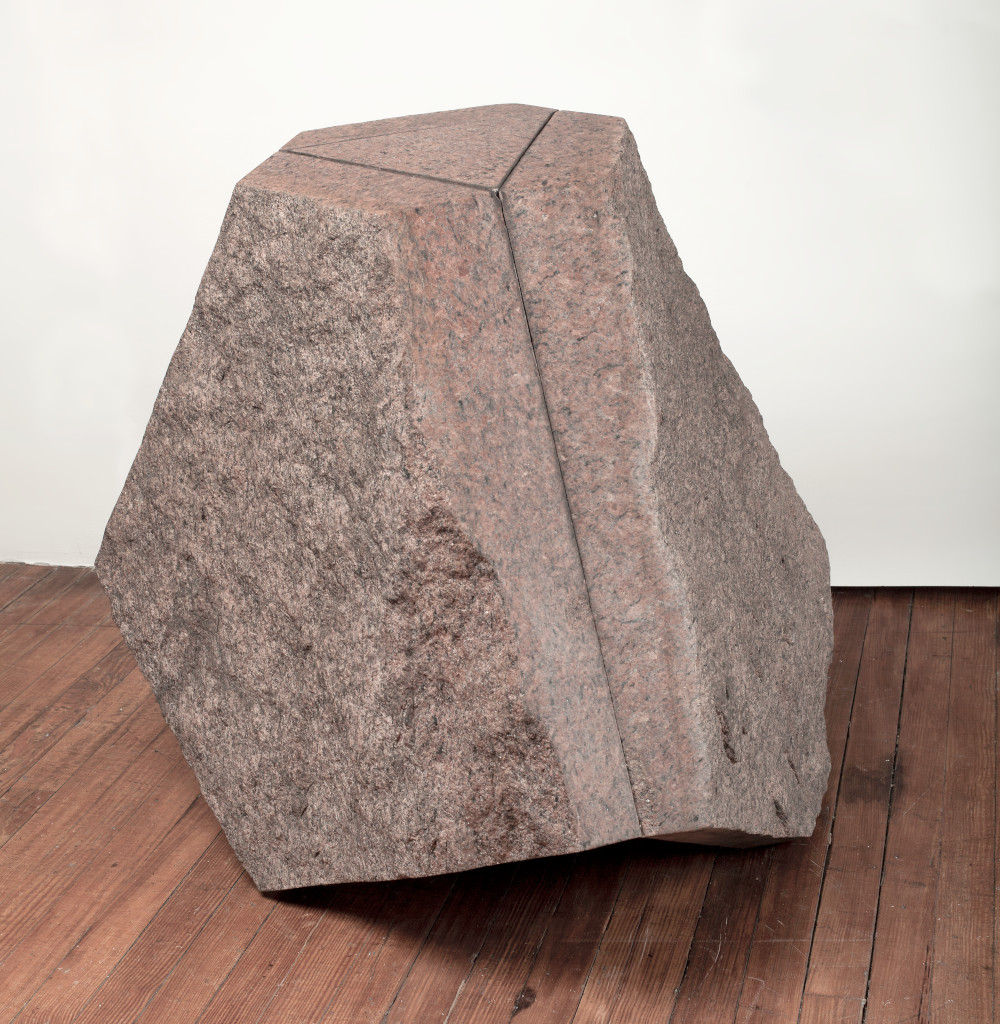


In the 1960s and ’70s, when space travel came to represent the pinnacle of modern human technological achievement, Noguchi was thinking as much about the past as he was about the future. He once remarked, “I like to think, when you get to the furthest point of technology, when you get to outer space, what do you find to bring back? Rocks!” In these granite works, Noguchi drew connections between the Stone Age and the Space Age.
While his Re-Entry Cone (1970) alludes to a module of a spacecraft that returns to earth following spaceflight, his incised Lunar Table (1961–65) resembles a cross-section of the moon’s surface, undulating in a way that suggests the artist may have had Albert Einstein’s theories of curved space-time in mind. Meanwhile, his enigmatic black basalt work titled Origin (1968) prompts reflection on the concept of birth or invention across the vastly different timescales of human and cosmic life.
Noguchi was deeply inspired by the idea that sculpture could facilitate new means of observing the cycles of celestial bodies, allowing us to better appreciate our place in the cosmos and the relative timescales of human life. Noguchi’s public sculptures and play equipment, represented here by miniature models in plaster and steel, chronicle the artist’s continued efforts to tilt our gaze skyward through the apertures of his sculptural forms.
